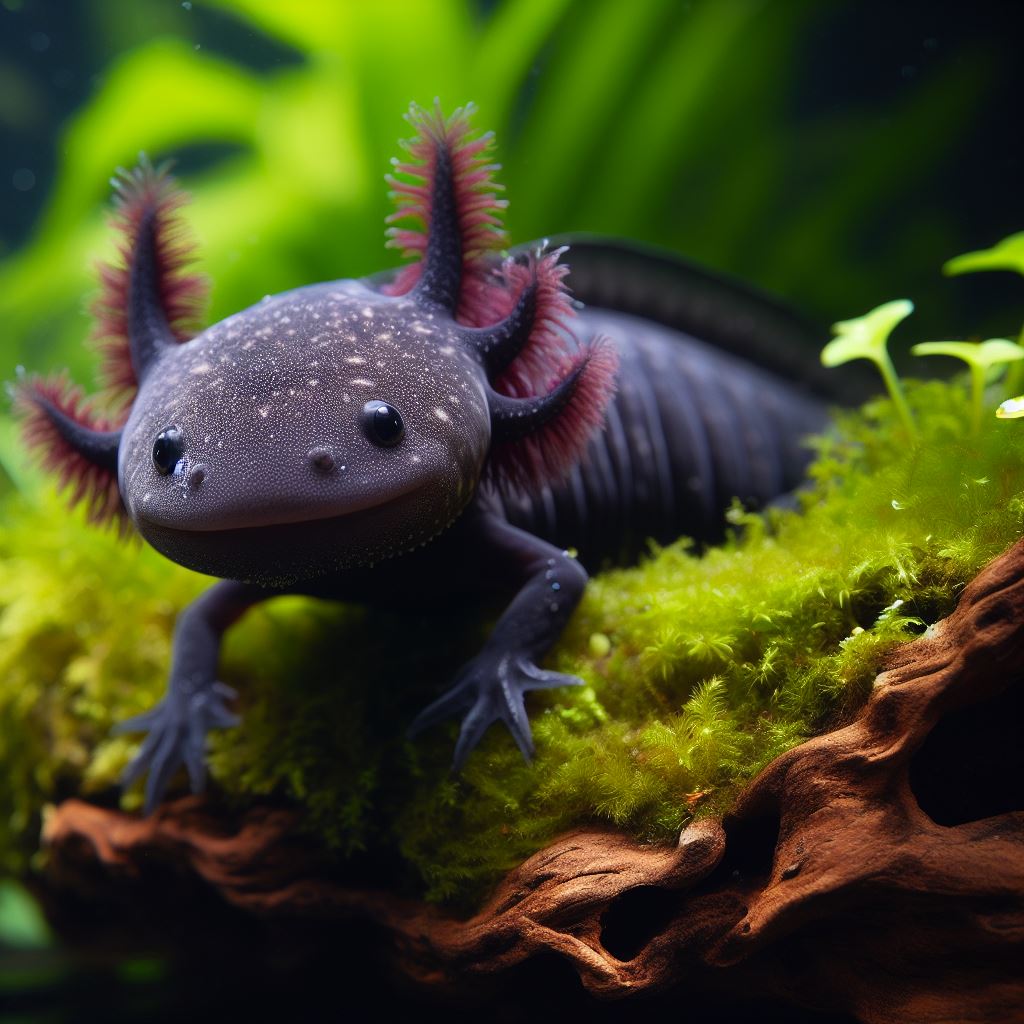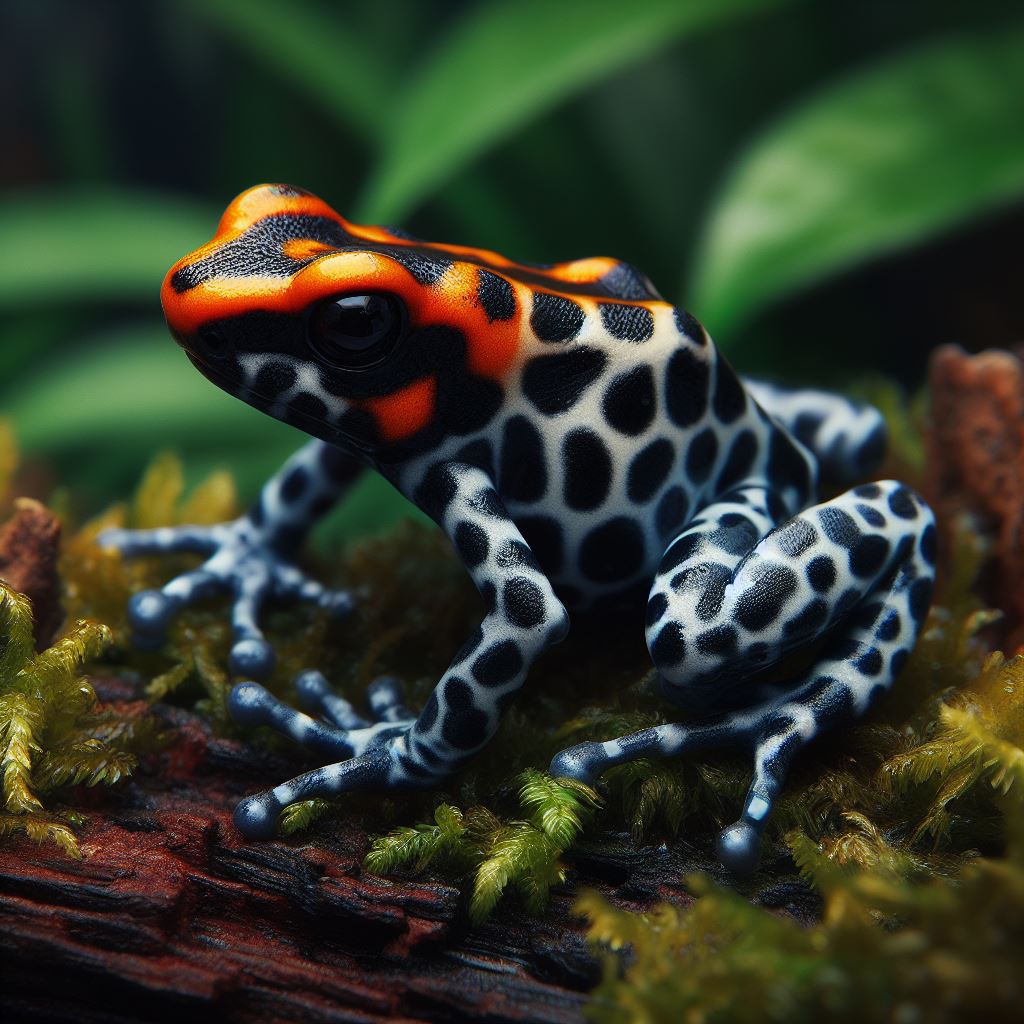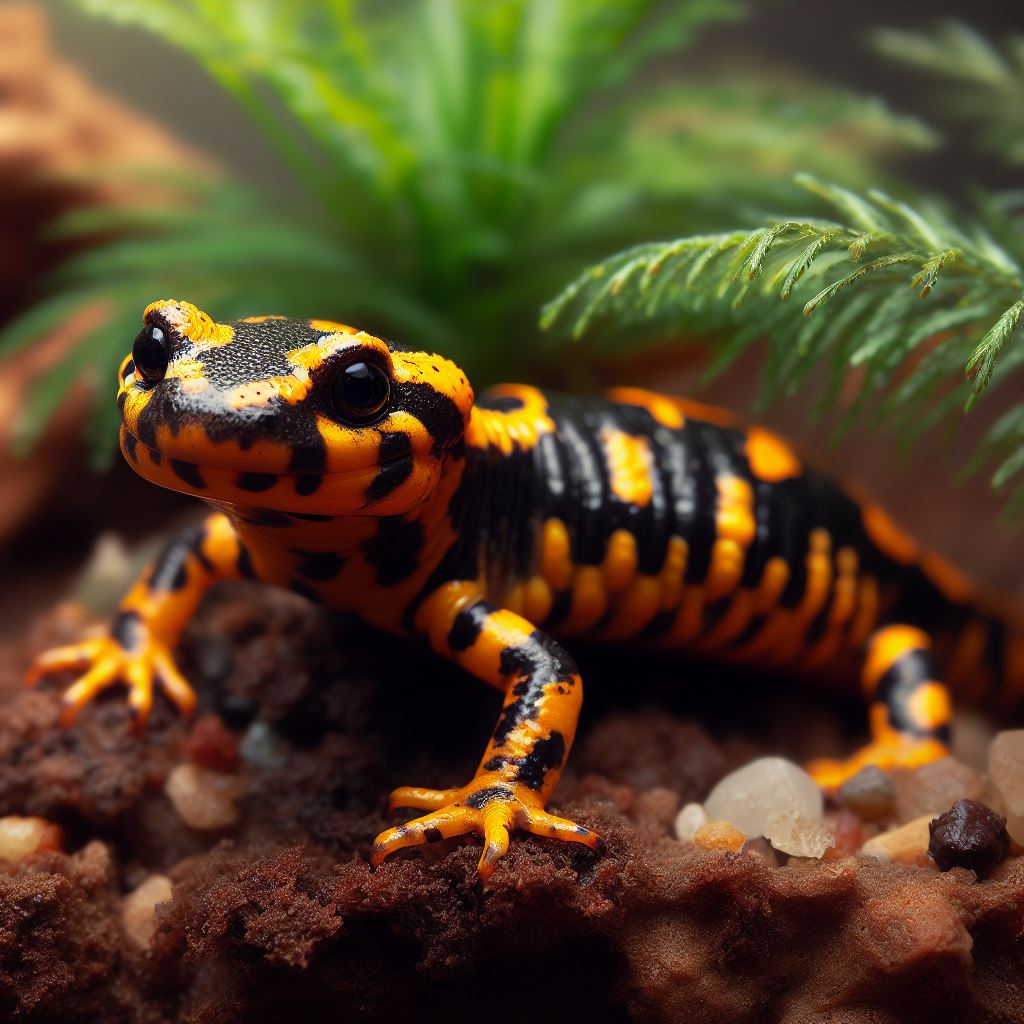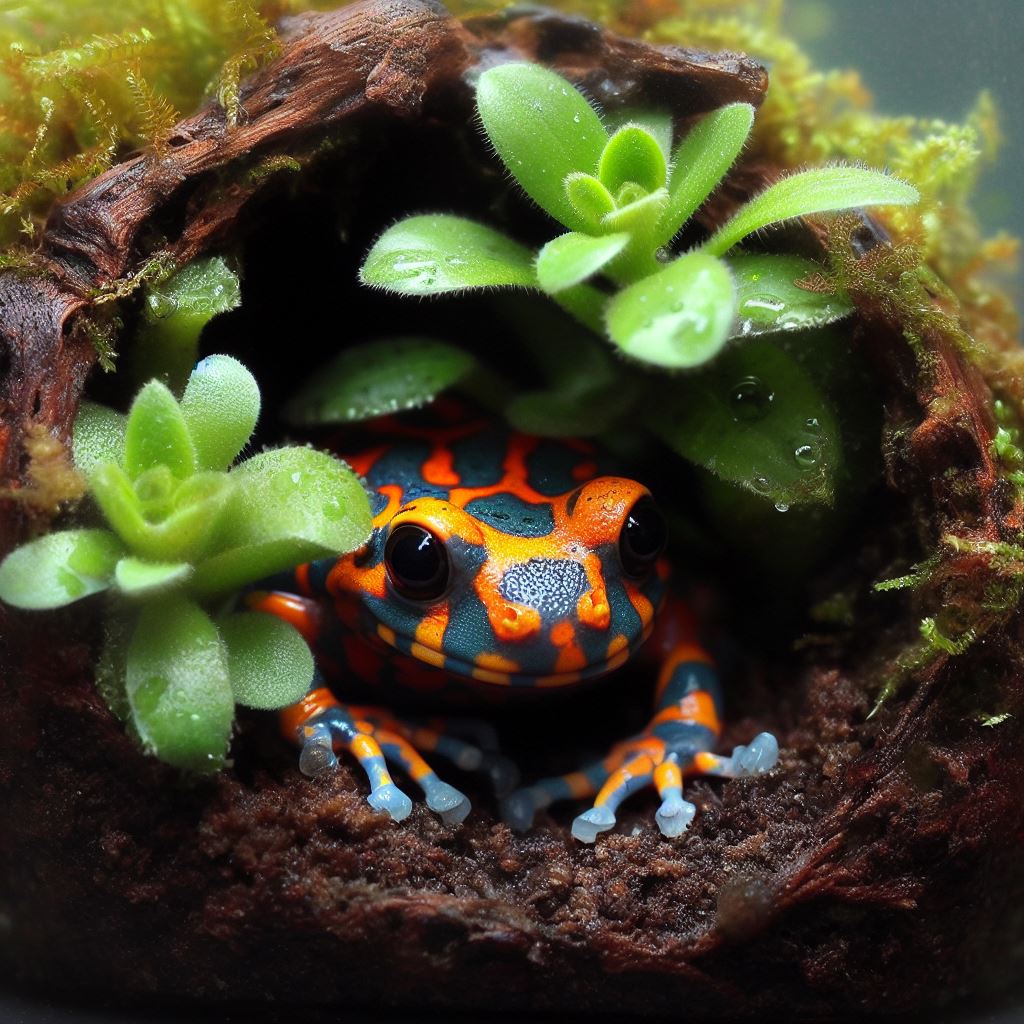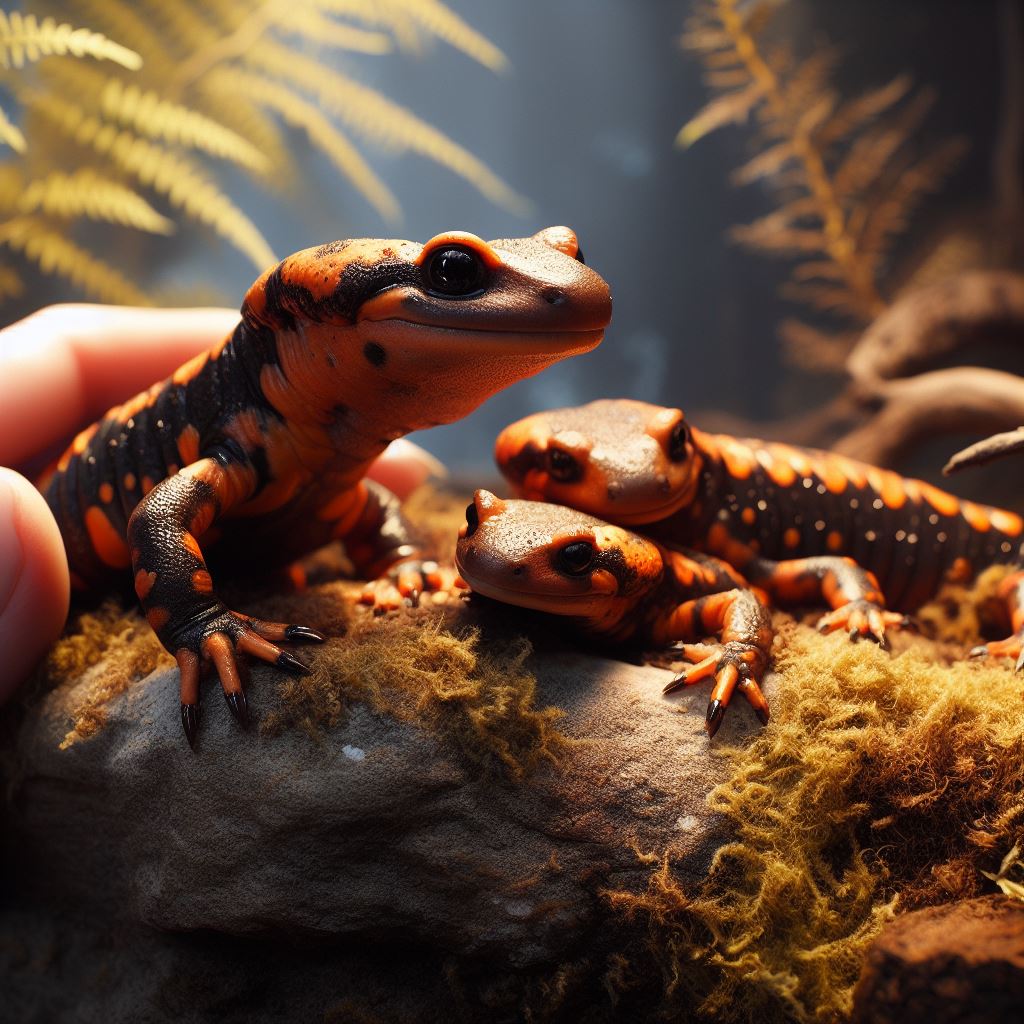Introduction to Axolotls:
Species Overview:
Axolotls, scientifically known as Ambystoma mexicanum, are captivating amphibians native to the ancient waterways of Mexico. Their unique feature lies in their ability to retain juvenile traits throughout their entire lives, a phenomenon known as neoteny. Their external gills and perpetual larval form make them a subject of fascination for biologists and pet enthusiasts alike.
Unique Biological Features:
- Neoteny: One of the most distinctive features of axolotls is their neotenic nature. Unlike most amphibians, they do not undergo complete metamorphosis and retain their aquatic larval form throughout their lives.
- Regenerative Abilities: Axolotls are renowned for their exceptional regenerative abilities. They can regrow lost limbs, tails, spinal cord, and even parts of their heart and brain, a capability that has fascinated scientists for years.
- External Gills: Unlike other amphibians, axolotls have prominent external gills that resemble feathery tufts on either side of their heads. These gills allow them to breathe underwater, making them well-adapted for their aquatic lifestyle.
- Color Variations: Axolotls come in various colors, including shades of brown, black, white, and golden. Additionally, captive-bred axolotls exhibit a wider range of colors due to selective breeding.
Popularity as Pets:
Axolotls have gained popularity as exotic pets due to their unique appearance and relatively low maintenance requirements. However, it’s important for pet owners to provide them with appropriate living conditions and care to ensure their well-being.
Overall, axolotls are not only fascinating creatures in the realm of biology but also serve as a symbol of the delicate balance between nature and human impact on the environment.
Natural Habitat:
Axolotls are primarily found in the ancient lakes of Xochimilco and Chalco, which are located in the Valley of Mexico. This valley is a high-altitude region, and the lakes within it provide a specific ecological niche for these remarkable amphibians. The Valley of Mexico is surrounded by mountains, creating a unique environment with cool, temperate climates and freshwater sources, ideal for the survival of axolotls.
Ecosystem Description:
- Aquatic Vegetation: Axolotls thrive amidst lush aquatic vegetation, including various types of algae, water lilies, and submerged plants. These plants provide both shelter and a source of food for the axolotls and contribute to the overall biodiversity of the ecosystem.
- Temperature and Water Conditions: The temperate climate in the Valley of Mexico ensures cool waters, which are crucial for axolotls. They are highly sensitive to temperature changes, and the cool, stable environment of their native lakes supports their well-being. Clean, oxygenated water is essential for their survival, and their habitat is characterized by relatively clear and well-aerated waters.
- Biodiversity: Besides axolotls, their habitat is home to various fish species, insects, crustaceans, and other amphibians. This diverse community of organisms creates a delicate ecological balance, where each species plays a role in the overall health of the ecosystem.
- Reproduction and Life Cycle: Axolotls lay eggs in aquatic plants, and the larvae hatch in water. The abundance of suitable aquatic vegetation provides ample opportunities for them to lay eggs and for the young axolotls to find food and shelter as they grow.
- Human Impact: Unfortunately, due to urbanization and pollution, the natural habitat of axolotls in Lake Xochimilco has been significantly impacted. Pollution, invasive species, and habitat destruction pose serious threats to their survival in the wild, making conservation efforts crucial for the preservation of this unique species and its delicate ecosystem.
Understanding the intricacies of their native environment helps highlight the importance of conservation efforts to protect both axolotls and the diverse ecosystem they are a part of.
Characteristics and Behavior:
Anatomy and Physiology:
- Body Structure: Axolotls have a streamlined body structure adapted for their aquatic lifestyle. Their bodies are elongated and cylindrical, allowing them to move efficiently in water. The smooth, mucus-coated skin helps reduce friction as they glide through their aquatic environment.
- External Gills: One of the most distinctive features of axolotls is their external gills. These feathery structures are located on either side of their heads and serve dual purposes. They enable axolotls to respire underwater by extracting oxygen from the water, and at the same time, they add to the axolotls’ charm, making them unique among amphibians.
- Limbs: Although axolotls have limbs, they are diminutive in comparison to other amphibians. These limbs are equipped with small, delicate digits. While they are present, axolotls predominantly rely on their strong tails for propulsion, allowing them to move gracefully in the water.
Social Conduct:
- Solitary Nature: In their natural habitat, axolotls are solitary creatures. They do not exhibit strong social behaviors and prefer to live alone. Their solitary nature contributes to their non-aggressive demeanor, as they do not compete for territory or resources with other individuals of their species.
- Feeding Behavior: Axolotls are opportunistic feeders, meaning they consume a variety of prey that they can find in their environment. They rely on their keen senses, including a good sense of smell and lateral line system, to detect movement and locate prey. Axolotls are known for their patience in hunting, waiting silently for prey to come within striking distance before making a swift capture.
Understanding their anatomy, physiology, and social behavior provides valuable insights into the unique adaptations that enable axolotls to thrive in their native aquatic habitat. These traits contribute to their charm and fascination among scientists, pet enthusiasts, and nature lovers alike.
Feeding and Diet:
Dietary Habits in the Wild:
- Natural Prey: In their natural habitat, axolotls primarily feed on a diet of small fish, insects, crustaceans, and other aquatic invertebrates. Their carnivorous nature is crucial for their growth, development, and overall sustenance.
- Hunting Skills: Axolotls are skilled hunters, displaying remarkable agility and patience when capturing their prey. Their keen senses and ability to detect subtle movements in the water aid them in hunting effectively.
Adjustments in Captivity:
- Supplemented Diet: When kept as pets, axolotls’ diets can be supplemented with high-quality axolotl pellets specifically formulated to meet their nutritional needs. These pellets often contain essential vitamins and minerals necessary for their well-being.
- Live or Frozen Food: Many pet owners also offer live or frozen food to their axolotls. This can include live worms, brine shrimp, daphnia, and other small aquatic creatures. Live or frozen food items provide enrichment and mimic their natural hunting behaviors.
- Balanced, Protein-Rich Intake: Replicating their natural diet is essential for their overall health. A balanced, protein-rich diet ensures that axolotls receive the necessary nutrients for proper growth and maintenance. Variability in their diet is also beneficial, offering a range of nutrients from different food sources.
- Caution with Feeder Fish: While feeder fish might be offered, it’s crucial to be cautious. Feeder fish can carry diseases and parasites, potentially harming the axolotl. Therefore, sourcing live food from reputable suppliers is important.
- Regular Feeding Schedule: Establishing a regular feeding schedule ensures that axolotls receive adequate nutrition. Overfeeding should be avoided to prevent obesity and maintain their overall health.
Understanding their dietary needs and providing a well-balanced and varied diet is essential for the health and longevity of axolotls kept in captivity. By replicating their natural feeding habits to the best extent possible, pet owners can contribute significantly to their overall well-being.
Reproduction and Life Cycle:
Reproductive Processes:
- External Fertilization: Axolotls engage in external fertilization, a process where males release sperm into the water, and females absorb it externally. This method is common among aquatic species and ensures fertilization occurs outside the body.
- Regenerative Abilities: Axolotls’ exceptional regenerative abilities extend to their reproductive organs. This unique trait allows them to heal injuries, which is a rare feature among vertebrates and contributes to their remarkable adaptability.
Parental Nurturing:
- Limited Parental Care: While extensive parental care is not typical in axolotls, mothers might display protective behaviors, particularly during the hatching phase. This protective instinct helps safeguard the eggs until they hatch.
- Egg Laying and Incubation: Axolotl eggs are often laid on aquatic plants. The stable environment provided by these plants is crucial for the successful incubation of the eggs. While direct parental care is limited, the choice of a suitable location for egg laying is essential for the survival of the offspring.
Breeding in Captivity:
- Meticulous Care: Breeding axolotls in captivity requires meticulous attention to detail. Maintaining optimal water quality, stable temperature, and providing a well-balanced diet are essential factors for successful breeding.
- Understanding Reproductive Cues: Experienced breeders pay close attention to reproductive cues displayed by the axolotls, such as courtship behavior and physical changes. Recognizing these cues helps breeders determine the right time for introducing males and females for mating.
- Providing Suitable Environment: Creating a suitable breeding environment, including appropriate tank setup, nesting sites, and hiding places, is imperative. Providing the axolotls with a stress-free environment encourages natural mating behaviors and successful reproduction.
Breeding axolotls in captivity is a delicate process that demands a deep understanding of their natural behaviors and environmental requirements. By replicating their natural habitat conditions and being attentive to their reproductive cues, breeders can contribute to the conservation and understanding of this fascinating species.
Conservation and Protection:
Conservation Status:
- Critical Endangerment: Axolotls are tragically classified as critically endangered due to the alarming decline in their natural habitats. This status indicates that they face an extremely high risk of extinction in the wild.
Threats to Axolotls:
- Habitat Loss: Urbanization and agricultural expansion have led to significant habitat loss for axolotls. The draining of their natural lakes for human activities has greatly reduced their living space.
- Pollution: Pollution from various sources, including agricultural runoff, industrial discharge, and waste dumping, contaminates the water in their habitats. Pollutants adversely affect water quality, making it inhospitable for axolotls and their prey.
- Introduction of Non-Native Species: Invasive species, such as certain fish, compete with axolotls for food and habitat. They also pose predation threats, further disrupting the delicate ecological balance of their ecosystem.
Conservation Efforts:
- Awareness and Education: Raising awareness about the axolotl’s plight and educating local communities and the general public about their importance in the ecosystem can garner support for conservation efforts.
- Habitat Restoration: Efforts to restore and protect their natural habitats are critical. This includes preserving the remaining lakes, controlling pollution, and re-establishing aquatic vegetation essential for their survival.
- Scientific Research: Scientific research helps in understanding axolotl behavior, genetics, and habitat requirements. This knowledge is vital for implementing effective conservation strategies.
- Supporting Conservation Organizations: Contributing to reputable organizations dedicated to amphibian conservation, such as the Amphibian Survival Alliance, can provide essential funding for research, habitat restoration, and educational programs.
- Community Engagement: Involving local communities in conservation initiatives fosters a sense of ownership and responsibility. Collaborative efforts with locals can lead to sustainable solutions for habitat preservation.
- Legal Protection: Implementing and enforcing laws and regulations that protect axolotls and their habitats is crucial. Legal frameworks can deter activities that harm their environment and ensure the enforcement of conservation measures.
Supporting conservation initiatives and actively participating in efforts to protect axolotls and their habitats are essential steps in ensuring the survival of this unique and remarkable species for future generations.
Myths and Realities:
Common Fallacies:
- Misconception of Fish: Myth: One of the prevalent myths is considering axolotls as fish due to their aquatic habitat. Reality: Axolotls are amphibians, belonging to the salamander family. They are air-breathing vertebrates that live in water during their entire life cycle.
Factual Truths:
- Neotenic Nature: Fact: Axolotls exhibit neoteny, retaining juvenile traits like external gills and larval features throughout their lives. Significance: This unique characteristic sets them apart from most amphibians, making them a subject of scientific fascination.
- Remarkable Regenerative Abilities: Fact: Axolotls possess exceptional regenerative abilities, being able to regrow lost limbs and even parts of their organs. Significance: Their regenerative capabilities are vital for scientific research, contributing to the understanding of tissue regeneration and potential applications in regenerative medicine.
- Importance of Accurate Knowledge: Fact: Accurate knowledge about axolotls is crucial for appreciating their uniqueness and ensuring their proper care in captivity. Significance: Dispelling myths and promoting accurate information can lead to a better understanding of these fascinating creatures, both in scientific contexts and among pet enthusiasts.
Understanding the reality of axolotls’ biology, behaviors, and unique traits is essential. By dispelling misconceptions and embracing accurate knowledge, we can truly appreciate the marvel of nature that axolotls represent, inspiring scientific inquiry and conservation efforts aimed at preserving these extraordinary amphibians.
Raising Axolotls at Home:
Prerequisites for Rearing:
- Spacious Habitat:
- Requirement: Provide a spacious tank that allows axolotls to move freely. A larger tank offers a more natural environment and ample space for exploration.
- Inclusion: Incorporate aquatic plants, rocks, and hiding places to create a stimulating and secure environment.
- Proper Filtration:
- Essential: Implement a reliable filtration system to maintain clean and oxygenated water. Axolotls are sensitive to water quality, so filtration is crucial for their well-being.
- Stable Water Temperature:
- Necessity: Maintain a stable water temperature within the suitable range for axolotls, typically between 16-20°C (60-68°F). Sudden temperature fluctuations should be avoided.
- Balanced Diet:
- Importance: Offer a balanced diet rich in protein. This can include high-quality axolotl pellets, live or frozen worms, brine shrimp, and other aquatic invertebrates.
- Variety: Introduce variety in their diet to ensure they receive essential nutrients from different sources.
Tips for Novice Owners:
- Research and Education:
- Priority: Invest time in research to understand their behavior, dietary requirements, and optimal living conditions. Knowledge is key to providing proper care.
- Regular Water Quality Checks:
- Routine: Perform regular water quality checks, monitoring parameters like pH, ammonia, nitrites, and nitrates. Clean water is vital for axolotls’ health.
- Stress-Free Environment:
- Calm Surroundings: Avoid loud noises and disturbances around their tank. Axolotls thrive in a peaceful environment, and stress can adversely affect their health.
- Observation and Interaction:
- Engagement: Spend time observing their behavior. While axolotls are not interactive in the same way as some pets, observing them helps you understand their normal behavior patterns.
- Seeking Professional Guidance:
- Consultation: If in doubt, consult experienced axolotl owners, breeders, or veterinarians. They can provide valuable insights and guidance tailored to your specific situation.
By adhering to these prerequisites and tips, novice owners can create a suitable and nurturing environment for axolotls. With proper care, these captivating amphibians can thrive, bringing joy and wonder to their caregivers.
Conclusion
In conclusion, axolotls, with their remarkable neotenic traits and extraordinary regenerative abilities, stand as fascinating wonders of the natural world. Their unique blend of charm and biological marvel has captivated the hearts of scientists, pet enthusiasts, and nature lovers alike. As we delve deeper into understanding their habitats, behaviors, and intricate needs, it becomes evident that our responsibility extends beyond mere fascination. With their critical endangerment due to habitat degradation, pollution, and invasive species, our role in conservation and protection becomes paramount. By dispelling myths, spreading accurate knowledge, and creating optimal environments in captivity, we can contribute significantly to the preservation of these incredible amphibians. Through education, awareness, and active conservation efforts, we can ensure that the legacy of the axolotl continues to inspire generations, reminding us of the delicate balance between humanity and the extraordinary biodiversity that graces our planet.

